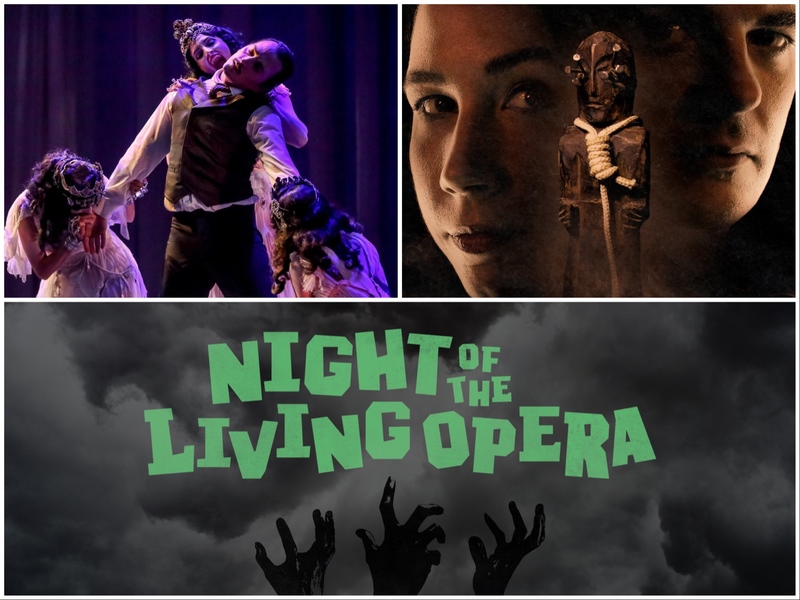Remember "Avatar"? The biggest movie on the planet – even still with the return of "Star Wars"? Somehow – whether it be the souring toward 3-D, general sourness toward James Cameron, the blazing pace of today’s pop culture or the film’s own admitted storytelling shortcomings (quick: quote "Avatar." No? How about name a character?) – it’s remarkably easy to forget the Hollywood monolith.
However, there’s no denying the phenomenon’s impact, power and ability to tell a simple universal story in a revolutionary way back in late 2009. I worked at a movie theater at the time, and I remember cramming eager viewers into screening upon screening for months well after its blue-hewed, ballyhooed arrival. Cirque du Soleil puppeteer Rob Laqui and publicist Laura Silverman definitely remember the Pandora-monium too.
"It was just so groundbreaking, visually what James Cameron created with the use of CGI and the new technology, so to be able to witness that live … I remember seeing it in theaters and thinking, ‘Is it real? Is it actors?’ It was incredible," Silverman recalled.
"There’s also a global message that James Cameron’s talked about as well, this idea of the indigenous people, that exists globally that resonates with many cultures across the world, and I think that really hit home with a lot of people around the world with that sort of international message," Laqui added.
It’s now in the hands of Laqui and his fellow cast and crew members to bring that immersive world and universal message from the big screen to a somehow even bigger stage with Cirque du Soleil’s "Toruk – The First Flight," a new show that will bring the planet of Pandora – with all of its unique beasts and fascinating flora – to the BMO Harris Bradley Center for six shows Sept. 22-25.
The story – which has been given the James Cameron seal of approval, making its new creatures "Avatar" canon – adds a new chapter to the Na’vi, telling of their ancestors, their conflicts and their survival through several new Na’vi characters. Like many Cirque du Soleil events, the particular plotting is less crucial than the sensory experience of entering a new place and witnessing new things.
Of course, the bar for "new things" is set pretty high considering its groundbreaking cinematic predecessor. The question becomes how to take Cameron’s immersive computer-based achievements that created Pandora on the big screen and translate that experience to the limited space of a single stage – albeit a very, very large single stage, made even larger by the use of projections. A lot of them, using 3-D mapping technology that was just being developed at the same time as "Toruk."
"We stepped into a new realm where we’ve basically overtaken the arena, using the entire arena floor to recreate Pandora and build our set and stage – about 15,000 square feet – and then on that, the projections that we’re using cover every single element of the stage and set and even go out into some of the seats in the bowl," Silverman said. "(The scale) is definitely the key element of this production. For reference, a big concert tour that has a lot of projections might have 12; we have 40."
Adding to the massive number of Pandora-creating projections is Cirque du Soleil’s use of BlackTrax, a real-time lighting technology that uses sensors to help track the actors on stage – and, in the case of "Toruk," to help shift the visualized world around the huge tactile tree at the center of the set.
"The video is so immersive that it makes it much easier to participate in the world (as an actor) because the quality of the video reads that close," Laqui added. "Through the lighting and video, we use those as tools to get into character, and as a puppeteer, you’re part of this world, an animal in this world, so it’s actually an amazing feature to be able to be a part of the video and the lights."
"It’s like we’re in a video game sometimes," he continued. "When they do a video pre-set, where they have this grid all across the stage, I love being in that. And then all of a sudden, then the set comes up, and I’m like on the holodeck on ‘Star Trek.’ It’s so cool to be a part of that, that the scale of it feels cinematic but it’s live. So there’s a really lovely parallel between the technology that was being developed for the movie and how groundbreaking that was, and the parallel that we’re doing the same thing for live theatrical events."
Of course, no matter the impressive technology on display, the world of Pandora wouldn’t be much without its inhabitants – both Na’vi and animal. To help bring them to the stage, Cirque hired Kym Barrett, a costume designer familiar to the performing group as well as the mind behind the looks of "The Matrix" trilogy, "Speed Racer" and this summer’s "The Nice Guys," to help adapt the film’s costumes to the stage. Then, for the animals, the company hired puppeteers like Laqui – who spent several years working on the revolutionary puppet stage show "War Horse" – to breathe live into the planet’s creatures.
"I was a touring dancer for over a decade before really going down the puppet path, and I find that they’re super related," he noted. "You’re not embodied in yourself; you’re sort of funneling this tension and this expression through something else that’s not you, so puppeteering was a really natural progression for me to go into. And I actually find it much easier to do puppeteering in some ways, because a lot of times you portray animals, and the intent and motivation that animals have is much simpler. It’s a less complex sort of system of subtexts and intentions, so when you’re a wolf, sensory-wise, it’s actually much easier to step into that because it’s more visceral and a lot more present."
Laqui himself helps play five of the six animal puppets throughout the show: a Viperwolf, a Turtapede, a Direhorse, a wood sprite, an Austrapede and the massive dragon creature that gives the show its name, a massive "reverse marionette" puppet that requires all six of the puppet performers.
"That one’s a challenge because we have to collectively have the same intention and be an ensemble and be one unified creature," Laqui said, "so it takes a lot of focus and a lot of commitment in that moment to achieve that."
There’s also the challenge of creating this unified creature – and even simply communicating – in such a massive performance space. But between the physical performances and the technological advances, a world is created, one that will hopefully stick with viewers well after the projection lights go down – and well longer than its film forefather did in 2009.
"(I hope) that they feel they’ve left the planet and that they’ve gone on this journey with us and that they walk away feeling like they saw this crazy dream that was so vivid that hopefully changes them for a bit," Laqui said.
Or at least certainly give "Avatar" fans desperately craving more Pandora something to tide them over until the first of its four planned sequels eventually comes out.
As much as it is a gigantic cliché to say that one has always had a passion for film, Matt Mueller has always had a passion for film. Whether it was bringing in the latest movie reviews for his first grade show-and-tell or writing film reviews for the St. Norbert College Times as a high school student, Matt is way too obsessed with movies for his own good.
When he's not writing about the latest blockbuster or talking much too glowingly about "Piranha 3D," Matt can probably be found watching literally any sport (minus cricket) or working at - get this - a local movie theater. Or watching a movie. Yeah, he's probably watching a movie.







